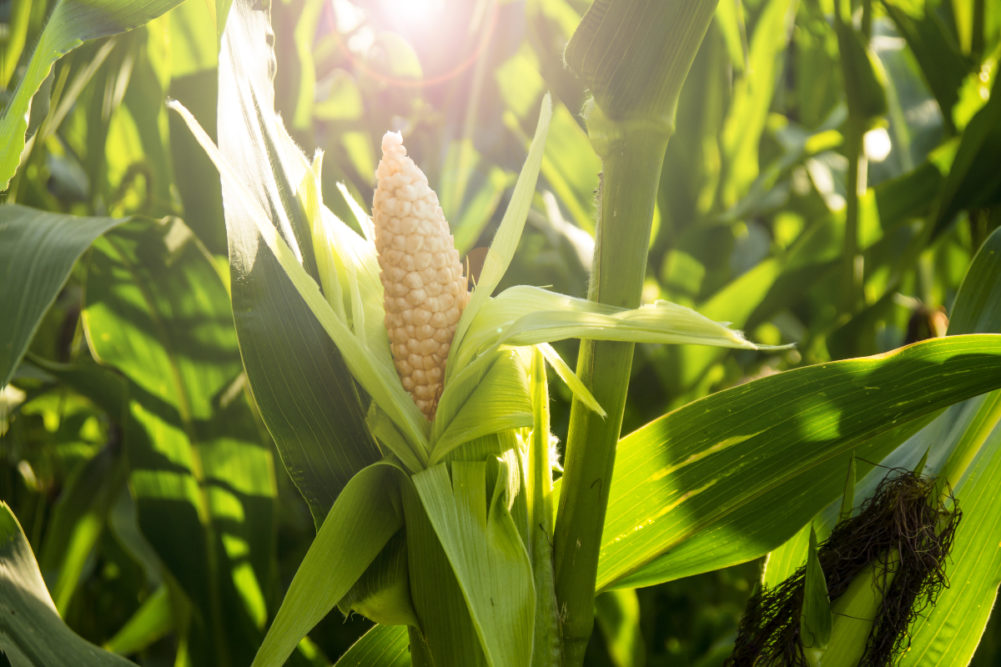KANSAS CITY, MISSOURI, US — Seeding of the 2020 corn, soybean and spring wheat crops progressed rapidly in most production states last week, but the latter remained behind the average pace, the US Department of Agriculture said in its weekly Crop Progress report.
The USDA indicated corn planting in the 18 principal producing states was 51% completed by May 3, jumping from 27% a week earlier. Seeding had progressed well past 21% a year earlier and was ahead of the 2015-19 average for the date at 39%.
Corn planting in Iowa by May 3 reached 78%, compared with 32% a year earlier and 46% as the five-year average. Illinois corn planting at 56% on May 3 was more than five times ahead of the state’s progress a year earlier, 10%, and slightly ahead of the five-year average, 54%. Nebraska, with 61% of its intended corn acres seeded, was well ahead of 30% a year ago and 38% as the 2015-19 average.
Corn emergence at 8% in the 18 states on May 3 was much closer to both 5% a year earlier and 10% as the five-year average. Still, corn emergence in select states was ahead of normal. Corn was 6% emerged in Iowa (1% a year ago, 4% as the average), 9% in Illinois (1%, 16%), 9% in Nebraska (1%, 5%) and 3% in Minnesota (0%, 4%).
Soybean planting in the 18 major production states was 23% completed by May 3, the USDA said. That was nearly five times the progress of a year earlier, when 5% of the crop was seeded, and more than double 11% as the five-year average.
Ideal fieldwork conditions in the US Midwest have allowed producers to make great strides in seeding corn and soybeans. But in the northern Plains, wet soils and cold temperatures that extended well into April delayed the start of fieldwork, including removal of some of last year’s fall crop.
“This week, we’re seeing some precipitation again in some areas of North Dakota, so that’s a continuous issue,” said Erica Olson, market development and research manager with the North Dakota Wheat Commission. “Unfortunately, there are still some crops left in the ground from last year, so farmers are still dealing with that as well.”
It was mostly some 2019 corn that remained in fields, but “in some areas there is even some wheat out there and other random crops,” Olson said. “Those will no longer be harvested, but producers still have to deal with the residue, and some will still try to combine some corn as well.”
Spring wheat seeding was 29% completed in the six major states, ahead of 19% a year ago but behind the average pace of 43%. The slow pace partly was attributed to producer uncertainty regarding prices and demand six weeks after the onset of the coronavirus (COVID-19) pandemic upended agriculture, energy and equity markets.
Specifically, demand for corn-based ethanol and other biofuels plummeted alongside the sharp drop in demand for oil and gasoline with many car drivers working at home.
The loss of ethanol demand took a toll on corn prices and was believed to have nudged some growers in the northern Plains to shift from corn to spring wheat. The moving acreage targets may have contributed to rapidly advancing corn planting progress and the slower pace of spring wheat seeding.
Planting in the top spring wheat production states was generally behind normal with North Dakota at 15% completed (11% a year ago, 33% as the average), Minnesota at 21% (6%, 45%), Montana at 33% (29%, 44%) and South Dakota at 60% (16%, 63%).
Washington and Idaho spring wheat was 92% and 78% planted, respectively, ahead of their year-ago paces.
Spring wheat emergence, too, was behind normal pace (6% in the six states compared with 4% a year earlier and 16% as the five-year average), due to delays getting the crop seeded in the northern Plains, but there is precedent for good yields despite the delayed start, Olson said.
“The summer weather is going to be a big factor, but producers are getting more comfortable with planting wheat later because we have had some years where it turned out well,” Olson said.
“If the weather shapes up and the soil dries out, producers can plant a large area in a small period of time,” she said. “So, we’re not overly concerned at this time. But with the wet soils and 2019 crop still in the ground, things have been more challenging than normal.”
At the same time, wheat prices are nothing special, Olson said. She said considering last year’s harvest issues, the pricing situation and COVID-19 effects in general, producers aren’t too enthusiastic about getting out in the fields and planting, and some are still making those decisions.
“But we are hearing of less interest in corn and some increased interest in spring wheat as well as soybeans,” she said.
Durum wheat planting was ahead of last year but behind the average pace. Durum was 13% planted in North Dakota (6% a year ago, 14% as the average) and 8% in Montana (17%, 28%).






